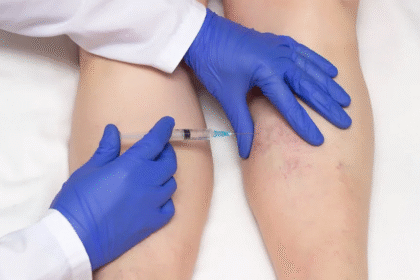When it comes to treating severe blood and immune-related disorders, few medical procedures are as transformative and hope-restoring as a Bone Marrow Transplant (BMT). This advanced medical technique has revolutionized the way doctors manage life-threatening conditions such as leukemia, lymphoma, multiple myeloma, and aplastic anemia, offering a pathway to long-term remission and improved quality of life.
A bone marrow transplant works by replacing the body’s damaged or destroyed marrow with healthy stem cells, enabling the regeneration of normal blood cells and the restoration of immune function. For many patients, this procedure is not just a treatment—it represents a second chance at life. Advances in transplant technology, improved donor matching, and better post-transplant care have made outcomes more successful and recovery smoother than ever before. Today, a BMT stands as one of modern medicine’s most remarkable achievements, giving thousands of patients each year renewed strength, health, and hope for the future.
Understanding Bone Marrow Transplant
Bone marrow is the soft tissue inside bones responsible for producing red blood cells, white blood cells, and platelets. When this tissue becomes damaged due to disease, infections, or cancer treatments, the body’s ability to produce healthy blood cells is compromised.
A Bone Marrow Transplant replaces the damaged marrow with healthy stem cells, helping the body rebuild its immune and blood-forming system.
Major Bone Marrow Transplant Options
There are several types of bone marrow transplants depending on the source of stem cells and the patient’s medical condition.
1. Autologous Transplant (Self Donation)
In this method, the patient’s own stem cells are collected before chemotherapy or radiation. Once treatment is complete, these cells are infused back into the body to restore bone marrow function.
Commonly used for: Lymphoma and multiple myeloma.
2. Allogeneic Transplant (Donor-Based)
Stem cells are obtained from a genetically matched donor, such as a sibling or volunteer. This type also offers an added benefit known as the graft-versus-tumor effect, where the donor cells help destroy any remaining cancer cells.
Commonly used for: Leukemia, thalassemia, and severe aplastic anemia.
3. Haploidentical Transplant (Half-Matched Donor)
This procedure allows a partially matched family member, such as a parent or child, to donate stem cells. It is especially beneficial when a fully matched donor isn’t available.
Commonly used for: Patients lacking a perfect donor match.
4. Umbilical Cord Blood Transplant
This involves using stem cells collected from umbilical cord blood. These cells can adapt easily to the recipient, even with a partial genetic match.
Commonly used for: Pediatric cases and rare blood disorders.
Step-by-Step Bone Marrow Transplant Procedure
The transplant process is complex but well-structured. Here’s how it generally unfolds:
-
Pre-Transplant Evaluation – Doctors conduct tests to assess the patient’s health and ensure eligibility.
-
Conditioning Treatment – High-dose chemotherapy or radiation is given to destroy diseased marrow and prepare the body for the transplant.
-
Stem Cell Infusion – Healthy stem cells are transfused into the bloodstream, similar to a blood transfusion.
-
Engraftment Period – Over the next few weeks, the new stem cells start producing healthy blood cells.
-
Post-Transplant Recovery – Continuous monitoring helps manage complications and support immune recovery.
Risks and Recovery
Every major medical procedure carries some level of risk. Common concerns after a bone marrow transplant include infection, graft-versus-host disease (GVHD), and organ complications. However, with advanced medical technologies and specialized care, success rates have significantly improved.
Recovery can take several months, depending on the patient’s overall health, but consistent follow-ups, nutrition, and rest are vital for long-term stability and improved quality of life.
Hope Through Advanced Treatment
Bone marrow transplants today are safer and more effective than ever before. Medical advancements, global donor registries, and improved supportive care have made it possible for more patients to access treatment worldwide.
Many international patients also explore advanced healthcare systems in India due to their medical expertise and affordability. For instance, patients often research the Bone Marrow Transplant cost in India while comparing treatment options across countries.
Conclusion
A bone marrow transplant represents far more than a medical procedure—it symbolizes hope, recovery, and the possibility of a new beginning. With the right specialists, supportive care, and modern techniques, patients can look forward to renewed health and a better quality of life.
Frequently Asked Questions (FAQs)
1. What is the success rate of a bone marrow transplant?
Success rates for bone marrow transplants vary depending on the disease, donor match, and patient health. On average, they range from 60% to 90% with modern medical advancements and expert care.
2. How long does recovery take after a bone marrow transplant?
Recovery usually takes 3 to 6 months, but full immune recovery may take up to a year. Regular checkups, proper nutrition, and infection prevention are essential for a smooth recovery.
3. Is the bone marrow transplant procedure painful?
The transplant itself is painless, as it is performed like a regular blood transfusion. Some discomfort may occur during chemotherapy or recovery, but doctors manage it effectively with medication.
4. Who can donate bone marrow for a transplant?
Healthy individuals aged 18–55 years can register as donors. Compatibility tests (HLA matching) help determine if their stem cells are suitable for the patient.
5. What is the Bone Marrow Transplant cost in India?
The Bone Marrow Transplant cost in India depends on the transplant type, hospital, and patient’s condition. However, it is generally much more affordable than in Western countries, with equally high success rates and quality care.



